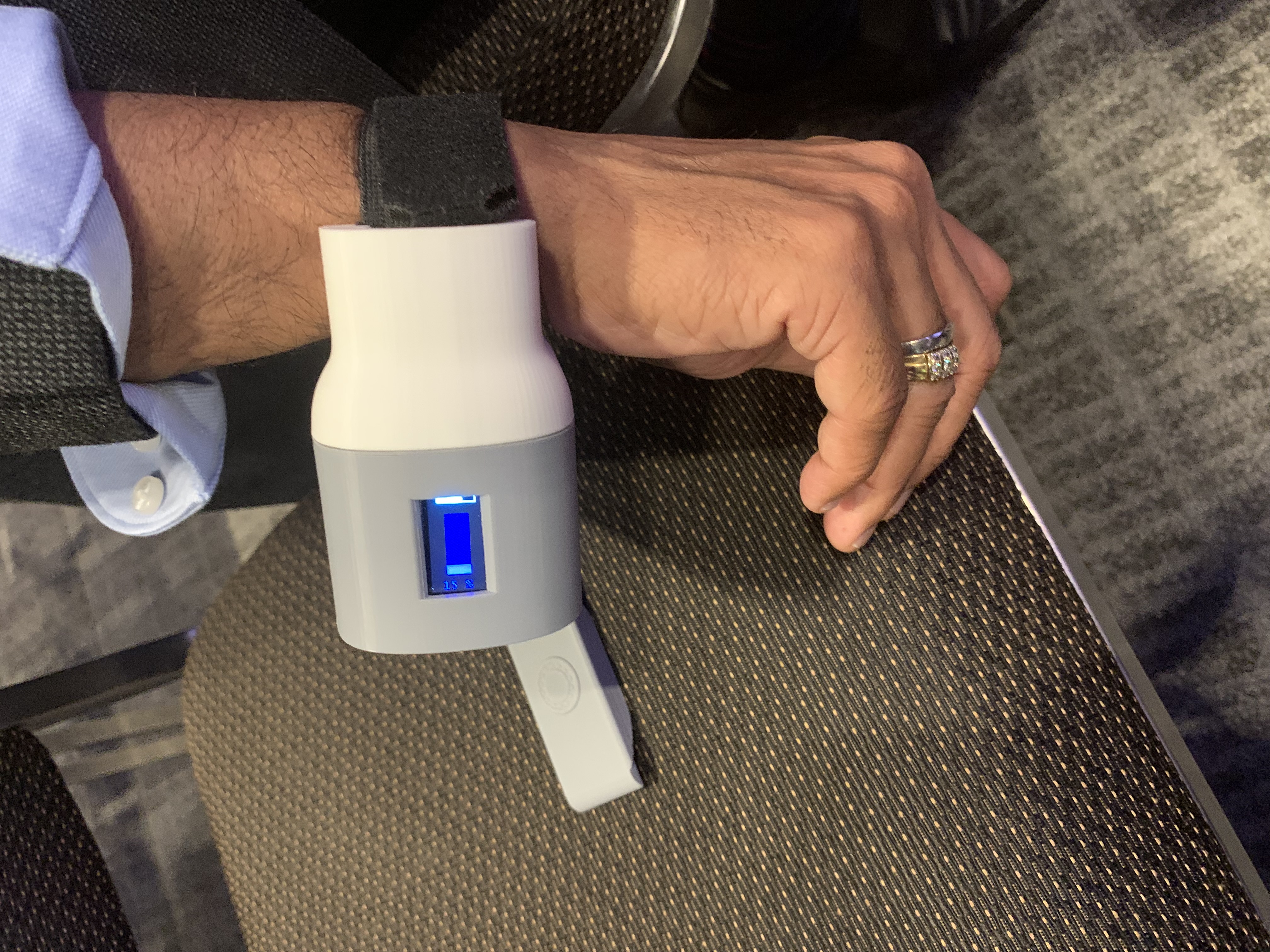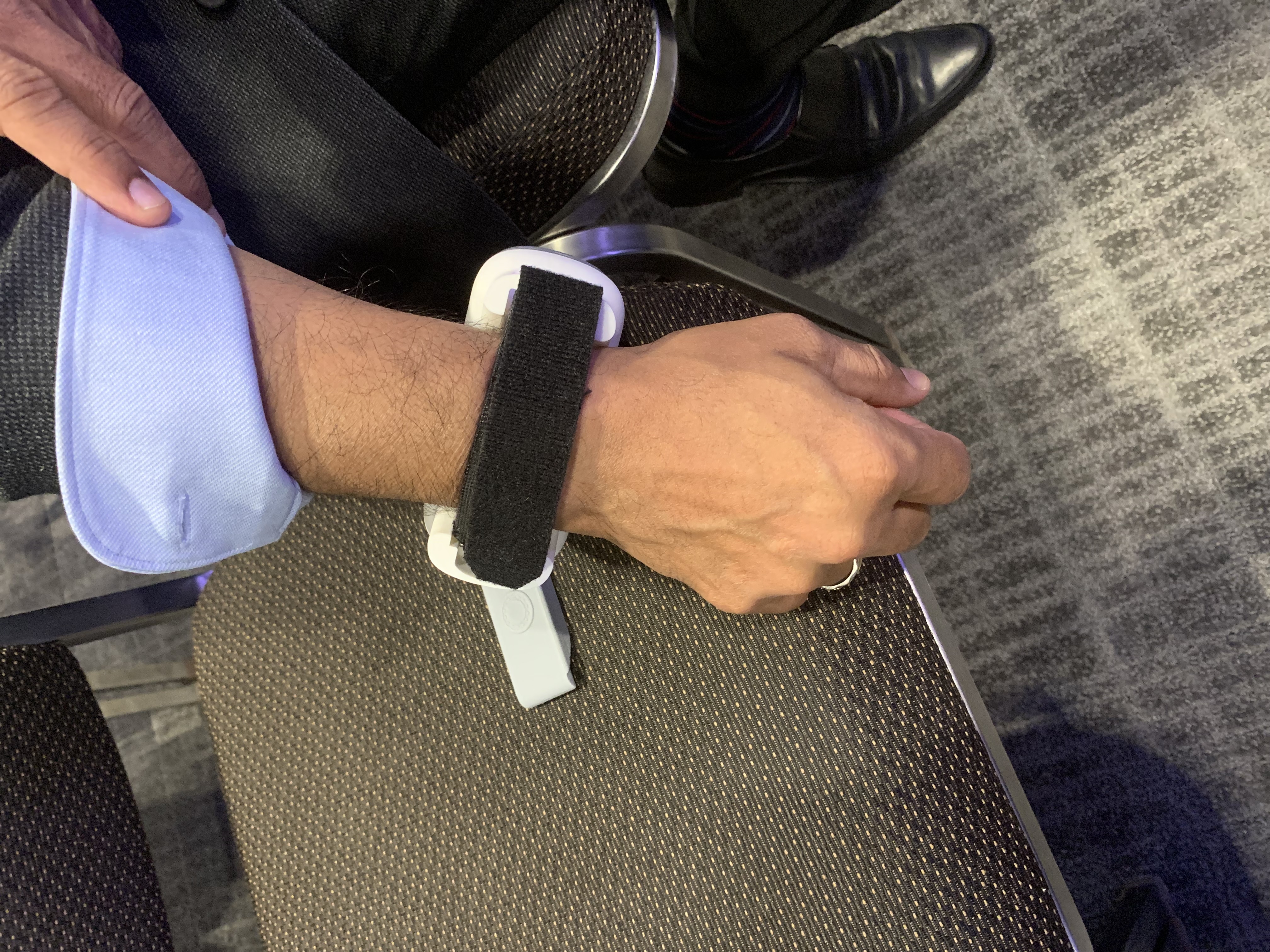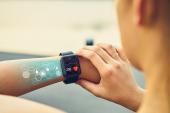Wrist-Worn Sensor May Help Detect Elevated Troponin in ACS
Pressing questions remain before determining a clinical role for this “innovative approach,” says James Januzzi, MD.

NEW ORLEANS, LA—A transdermal sensor worn on the wrist for less than 15 minutes may be useful in detecting elevated levels of troponin I without requiring a blood draw in patients with ACS, novel research presented here suggests.
One of the main advantages of the wearable device over point-of-care blood testing is swifter triage, Partho P. Sengupta, MD (Rutgers Robert Wood Johnson Medical School, New Brunswick, NJ), said in a late-breaking trial session at the American College of Cardiology/World Congress of Cardiology (ACC/WCC) 2023 meeting.
“Currently, the device is being tested for future clinical trials. There is a United States study that is undergoing enrollment looking at the value of the device in emergency rooms, but this can be certainly extended even further to chest pain units, urgent care settings, and perhaps could be utilized and implemented in ambulances and by trained paramedics without requiring any blood draw,” he concluded.
Speaking with TCTMD, Sengupta said while the application is new, the technology that the device (RCE Technologies, Carlsbad, CA) uses to assess troponin I is actually well documented.
“It's used in benchtop research settings for chemical composition analysis. However, the beauty is that we've been able to miniaturize it and compress it into a wearable device,” he said.
 When a patient has what amounts to a small box strapped to the wrist, infrared light travels through a crystal : some of that light escapes the crystal and travels through the skin. As that happens, the spectrum of light becomes altered and this attenuation of the infrared beams is sent via Bluetooth to a cloud-based system, where a machine-learning algorithm uses it to estimate the wearer’s troponin value.
When a patient has what amounts to a small box strapped to the wrist, infrared light travels through a crystal : some of that light escapes the crystal and travels through the skin. As that happens, the spectrum of light becomes altered and this attenuation of the infrared beams is sent via Bluetooth to a cloud-based system, where a machine-learning algorithm uses it to estimate the wearer’s troponin value.
Commenting in the late-breaking trial session, James L. Januzzi Jr, MD (Massachusetts General Hospital, Boston), said the device could be an “innovative approach to a very common issue,” but was cautious in overinterpreting the results of the small trial.
“Recent data from the ACC NCDR shows that institutions in the United States are now adopting high- sensitivity troponin with increasing velocity,” Januzzi noted. “So, the field is moving rapidly . . . [and] the challenge the investigators now face is seeing how this device will stack up relative to increasingly sensitive high-sensitivity troponins.”
He pointed out that being able to measure across a range of troponin concentrations would be particularly important for detecting rapid changes.
Sengupta said about 68% of patients had elevated troponin but the investigators were not able to look at ranges or intervals.
High Sensitivity Seen
For the study, Sengupta and colleagues enrolled 239 hospitalized patients with ACS from five sites in India. All patients received a blood test and then were fitted with the wrist device within 15 minutes. The investigators divided patients into a development cohort at three of the sites (n = 150) and a validation cohort at two of the sites (n = 88). The information from the development cohort was used to train the deep-learning model for prediction. The mean age in both groups was mid-50s, most patients were men, and most comorbidities were similar between groups.
The model predicted troponin I with an area under the curve (AUC) for sensitivity of 0.90 (95% CI 0.84-0.94) in the training model and 0.92 (95% CI 0.80-0.98) in the validation model.
 In addition to comparing the wrist-derived data with blood-derived troponin-I assessment, the investigators also compared how well it predicted obstructive CAD by comparing the results with available data from ECG, echocardiography, and coronary angiograms.
In addition to comparing the wrist-derived data with blood-derived troponin-I assessment, the investigators also compared how well it predicted obstructive CAD by comparing the results with available data from ECG, echocardiography, and coronary angiograms.
Having elevated troponin I on the wrist sensor was associated with an odds ratio for obstructive CAD of 4.69 and was associated with regional wall-motion abnormalities (P = 0.0003) and significant coronary stenosis (P = 0.01).
Future Directions
Sengupta said the wrist sensor still needs to be tested to determine if individual patient factors like skin tone and wrist size impact on the reliability of the results.
Januzzi said the potential to be able to measure troponin I outside of the emergency department in patients such as those with chronic heart failure, monitoring for stability and cardiac remodeling would be a major advance for a portable or wearable device “particularly if one can envision placing the device and leaving it in situ and then monitoring the velocity of change.”
He also questioned whether there were any changes seen in the precision of the device’s ability to measure troponin.
Sengupta noted that as the study is preliminary, more information on precision will likely come from data on how things like skin contact impact measurements.
In response to that, Januzzi suggested “looking at the precision of a device in lower concentrations where a patient may be rising or falling, because those are the patients where high-sensitivity troponin has made a big difference compared to conventional.”
To TCTMD, Sengupta said future trials of the device are planned and there also is the likelihood of turning into something more practical like a bracelet that can be worn more easily than the box.
L.A. McKeown is a Senior Medical Journalist for TCTMD, the Section Editor of CV Team Forum, and Senior Medical…
Read Full BioSources
Sengupta PP. A novel breakthrough in wrist-worn transdermal troponin-I-sensor assessment for acute myocardial infarction. Presented at: ACC/WCC 2023. March 6, 2023. New Orleans, LA.
Disclosures
- Sengupta reports being an advisor to RCE Technologies and Echo IQ; and holding option equity with those companies.





Comments